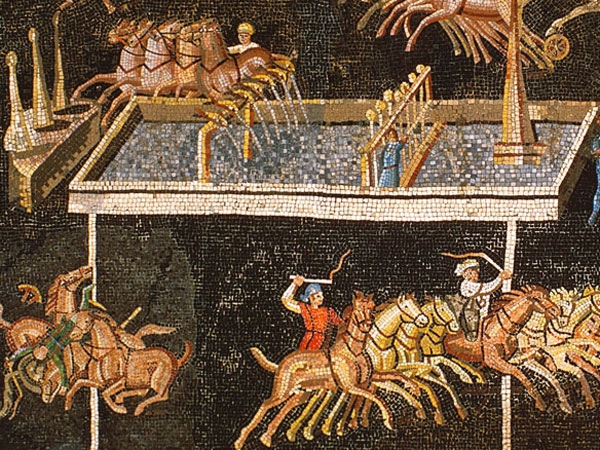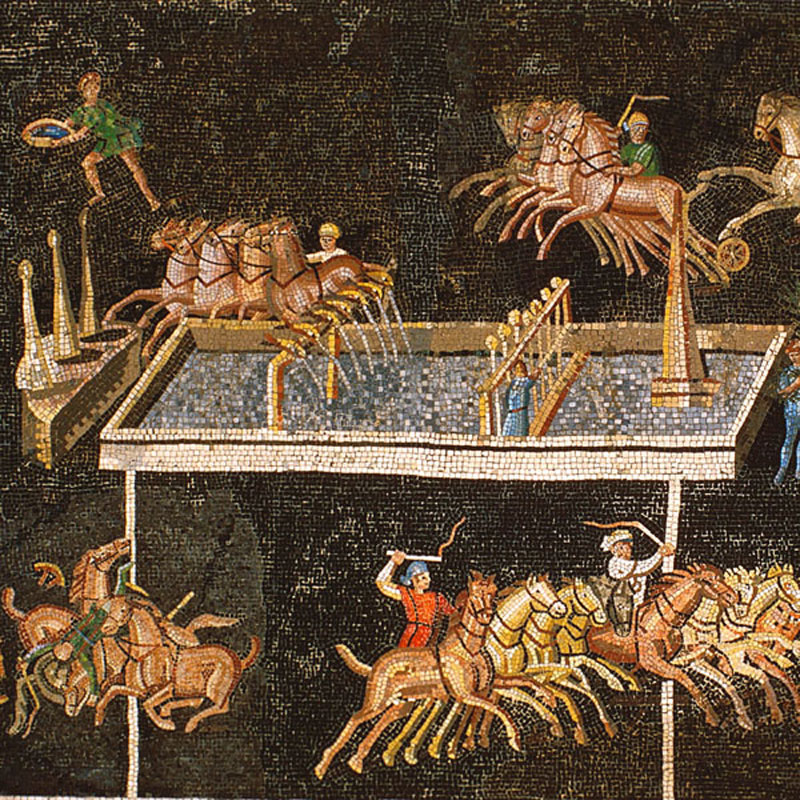Discovery is never-ending. Colette
Lyon, 1806. While working his land, a man from Lyon unearths a magnificent mosaic. Chariots, horses, an arena... It represents an antique circus! For the city, this is an archaeological treasure. So, a few years after its discovery, the municipality launches a procedure to purchase it. But it's too late! Tired of waiting for an administrative decision that never arrives, the owner has sold it to two collectors. And they’re getting ready to transfer it to Paris.
When the mayor learns about the situation, he reacts immediately. He forbids transportation of the mosaic, which might be damaged during the trip. The bits of stone and glass are assembled in a cement that was poured right on the ground. Just one erroneous manipulation and the entire work could be destroyed!
This is something the curators cannot accept: in addition to being an exceptional item, this mosaic is a historical document. It shows four chariots dashing around an oval track. There are dignitaries in the stands, and servants wait to crown the winner. It's not possible to lose such a high-quality historical record!
But leaving it in place exposed to the weather is not a safe solution either. A way must be found to transfer the mosaic to the museum without damaging it.
The municipality thought about the problem for many years before finding a solution. Finally, it called on the curator Belloni, who had developed a technique for transferring mosaics. After gluing a marble plaque to the top of the work with a fine layer of cement, the mosaic was transported without overly disturbing it. After restoration, it was displayed in the museum. Thirteen years after its discovery!
By Artips


